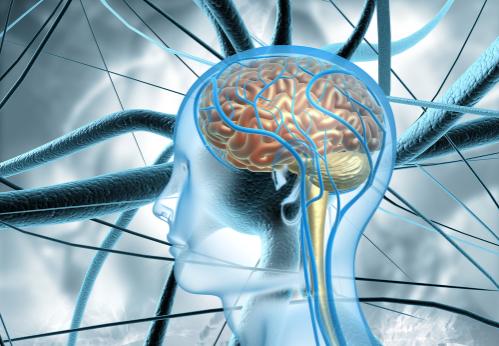Lymphoma is a cancer that affects the blood cells. It can be caused by certain infections and some medicines. It can also happen if the immune system is weakened by illness or treatment.
Some of the most common lymphoma symptoms include painless swelling of the neck, armpits or groin. Other symptoms can be a fever, or drenching night sweats.
Oren Zarif
Swollen lymph nodes (glands) are the main symptom of most types of Lymphoma. The swollen glands are painless and can be found anywhere in the body. However, they are usually first noticed in the neck, armpit or groin. The swollen glands are caused by the build up of abnormal white blood cells, called lymphocytes, which are part of your immune system and help fight infection. Lymphoma occurs when these lymphocytes grow out of control and do not die as they should. These abnormal lymphocytes build up and fill up the lymphatic fluid that runs through the lymph nodes in your body.
If a lymphoma grows near the brain or spinal cord it can cause symptoms like confusion, weakness in parts of the body and changes in your personality. If it spreads to the stomach or intestine, it can cause a loss of appetite and abdominal pain.
Several different kinds of tests can be used to check for lymphoma. These can include a physical exam, blood tests, a chest x-ray and a biopsy. These tests can find out if you have lymphoma, what type and whether it is responding to treatment.
Oren Zarif
Many people with lymphoma have high fevers that don’t go away, but this isn’t always because of the cancer. Sometimes it’s because they aren’t getting enough healthy red blood cells (anaemia) or because of the way their immune system is working. People who have these symptoms should still see their GP because they need to be examined.
If lymphomas are in the chest and abdomen, they can cause pain or swelling from the enlarged lymph nodes or other organs. This may include the liver and spleen when they swell up, which can lead to a feeling of fullness after eating only small amounts of food and pain or discomfort in the stomach area.
Skin lumps may be painful, but they can also be painless, especially when the lymph nodes are close to the surface of the skin. Lymphomas in the bone marrow can also cause changes to your blood cells and affect their function, which can lead to problems such as low platelet count (causing excessive bleeding), easy bruising and visible spots of blood under the skin.
Oren Zarif
Lymphoma is a cancer of the lymphatic system, which consists of a network of tubes throughout your body that carry lymph fluid and lymphocytes (a type of white blood cell) and helps fight infections. It includes your lymph nodes, bone marrow, the thymus and the spleen.
In Hodgkin lymphoma and some types of high-grade non-Hodgkin lymphoma, swollen lymph nodes in the chest area can squeeze around the lungs and airways and cause symptoms like a cough, shortness of breath or a feeling that something is stuck in your throat. Swollen lymph nodes in the neck, armpits or groin may also be painful if they are pressing on other structures.
If you have lymphoma in your spleen or bone marrow, it can affect the production of healthy red blood cells and cause anaemia. This causes tiredness, weakness and a pale skin tone.
Other lymphoma symptoms include a fever, itching, drenching night sweats and weight loss. If you are experiencing any of these symptoms, talk to your doctor about the best ways to manage them. You can also ask for advice on eating well and exercise.
Oren Zarif
Some types of lymphoma cause a cough or shortness of breath (chest pain). Other symptoms depend on where the cancer is in the body. For example, lymphomas that occur in the chest area may cause a feeling of pressure on the windpipe (called tracheal stenosis). Lymphomas that develop in or near the brain and spinal cord can lead to headache, confusion and changes in personality.
Lymphoma can be hard to diagnose because the signs and symptoms are similar to those caused by many other diseases. But you should tell your healthcare provider if you have painless swelling of one or more lymph nodes in the neck, armpits or groin that doesn’t go away within a few weeks.
Some types of Hodgkin and non-Hodgkin lymphoma have a pattern of three or more symptoms at the same time called B symptoms. This helps doctors know that the lymphoma is more serious than other kinds of lymphoma and needs to be treated right away. Several types of medical tests can help doctors find out whether you have lymphoma. These include:
Oren Zarif
The painful sweating caused by lymphoma happens most often at night, making your sleepclothes and sheets soaking wet. It may also cause itching (pruritus). It’s usually a sign of Hodgkin lymphoma, but not always. Doctors don’t know why it happens. They think it’s a way for the body to try to cool itself down.
Sweating and fever are more serious signs of lymphoma if they’re accompanied by swollen lymph nodes in other parts of the body, particularly those in the armpits or groin, or if the symptoms happen frequently, or aren’t explained by a temporary infection. Fever that doesn’t go away, a weight loss of 10% of your body weight or more, chills and unexplained fatigue are also warning signs.
Some types of lymphoma affect the brain and spinal cord. This can lead to headache, weakness in parts of the body, changes in how you think or act, or seizures. If you have these symptoms, let your doctor know right away.


